


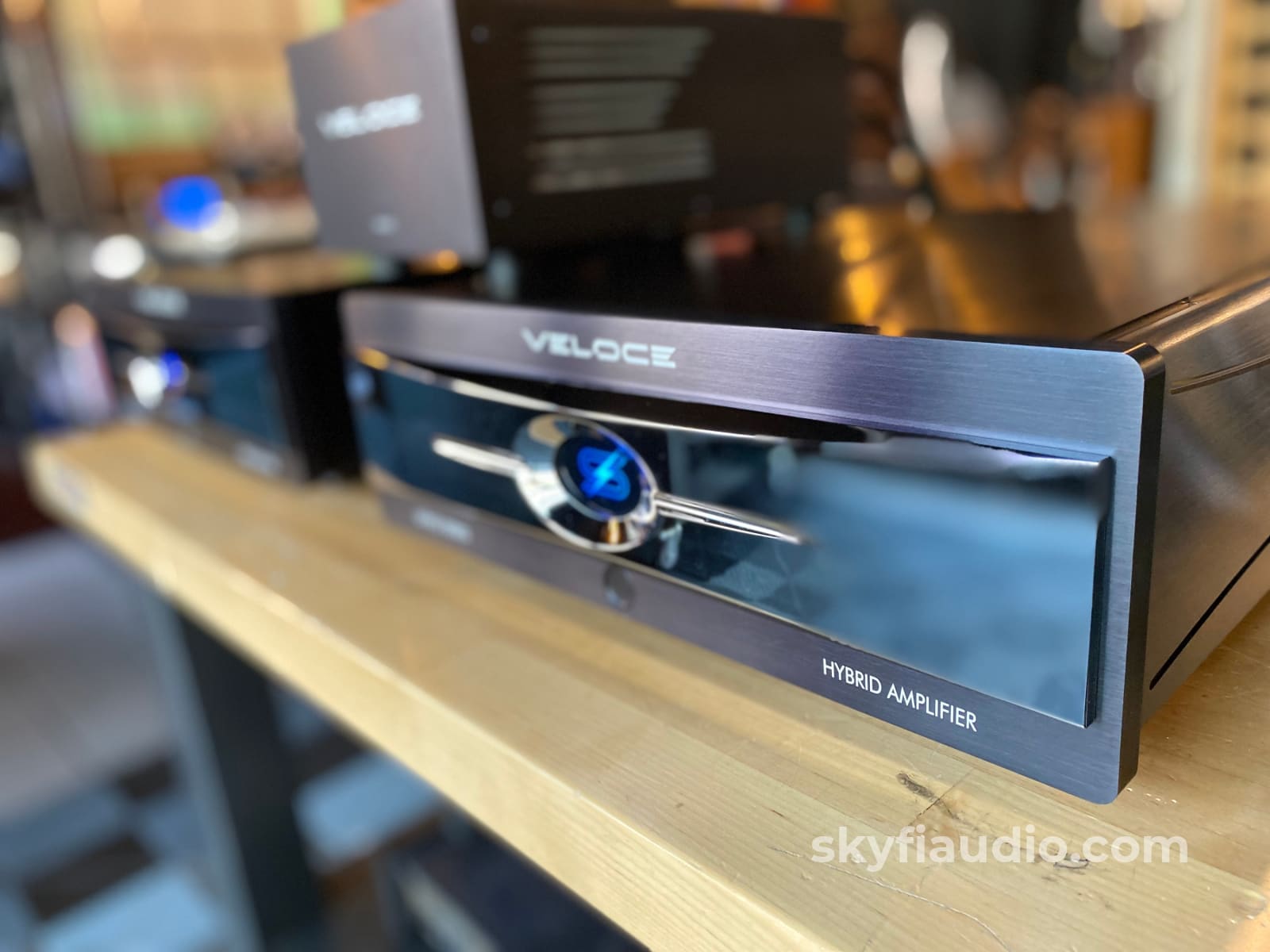
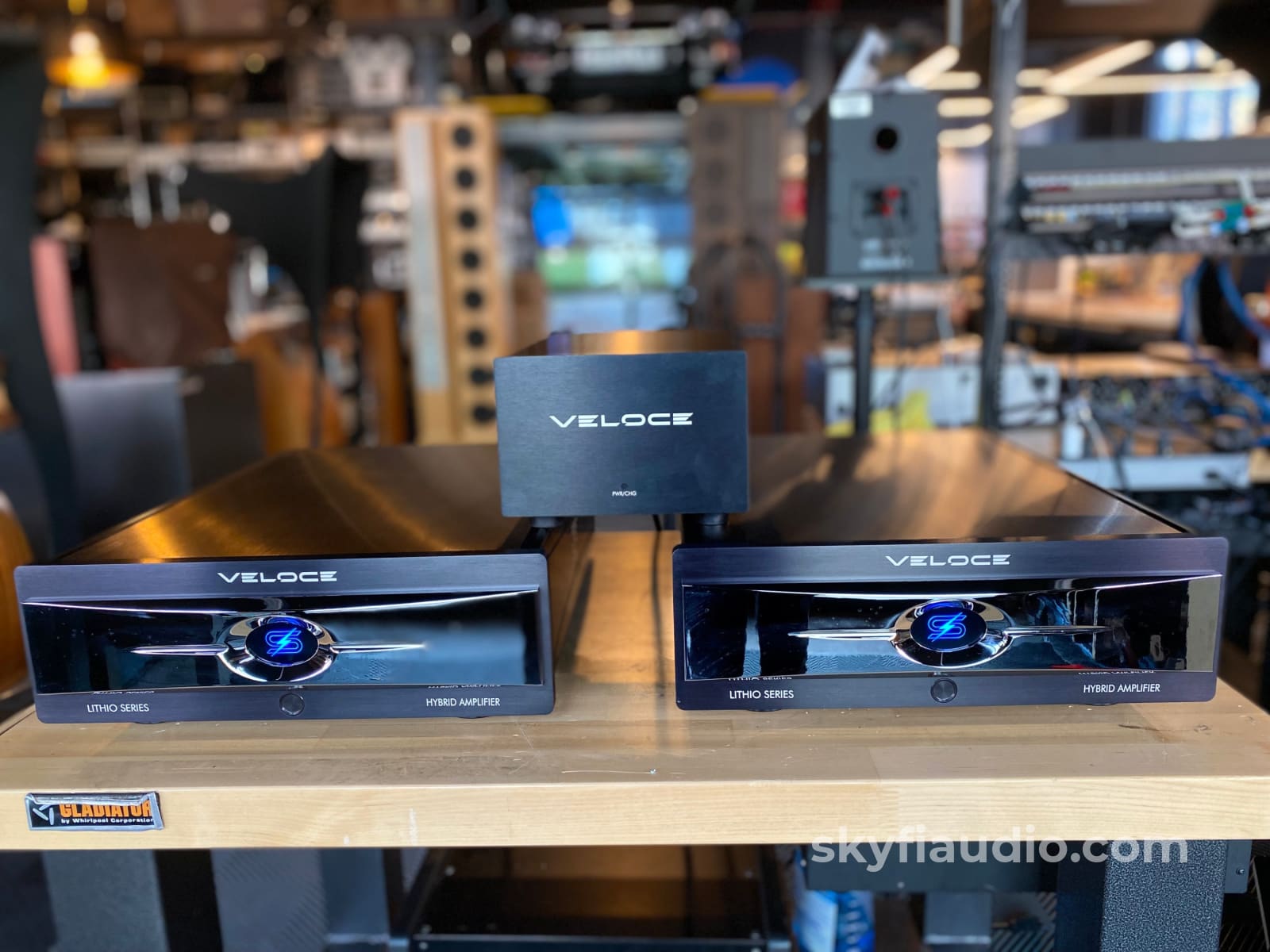

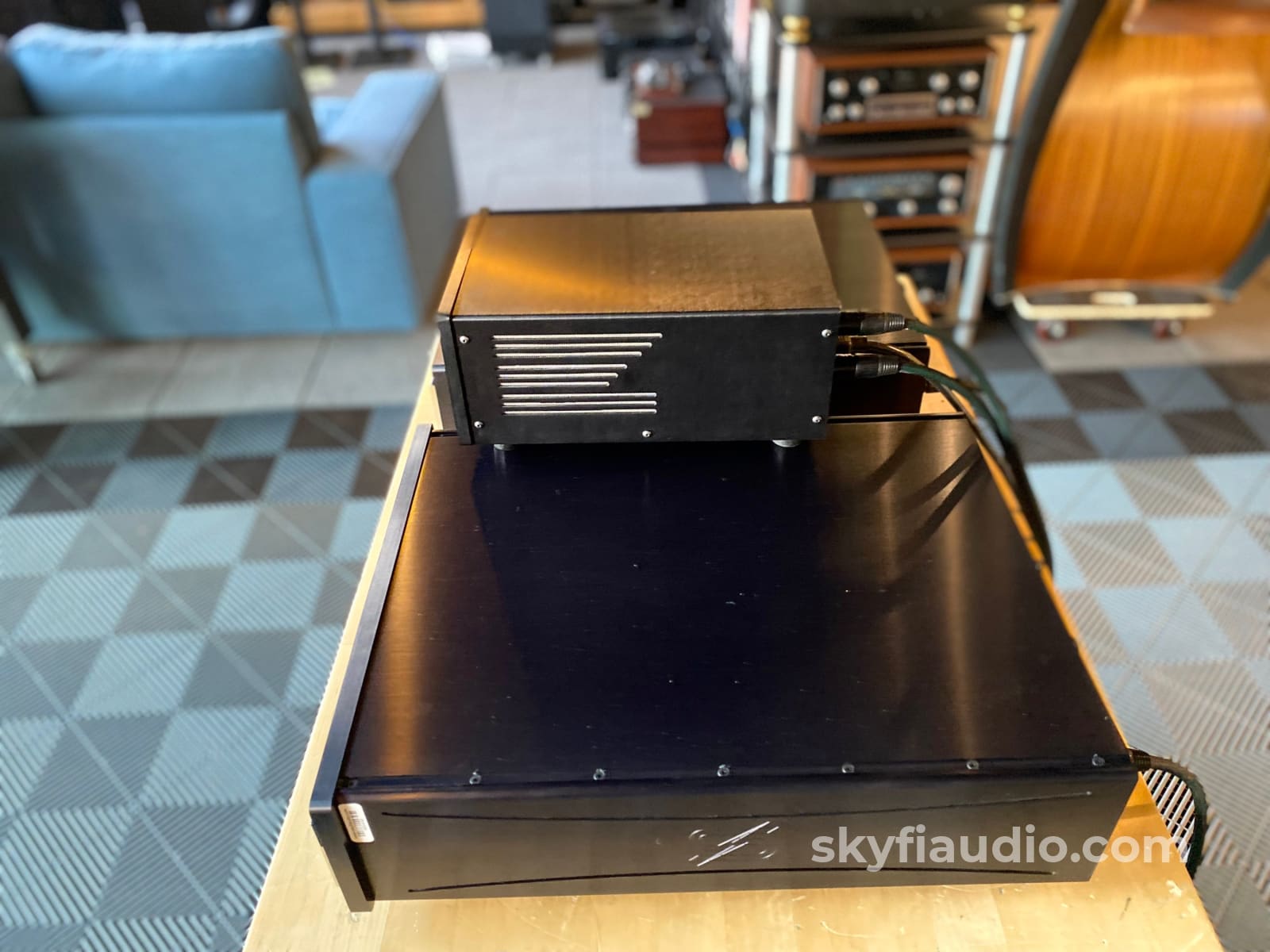
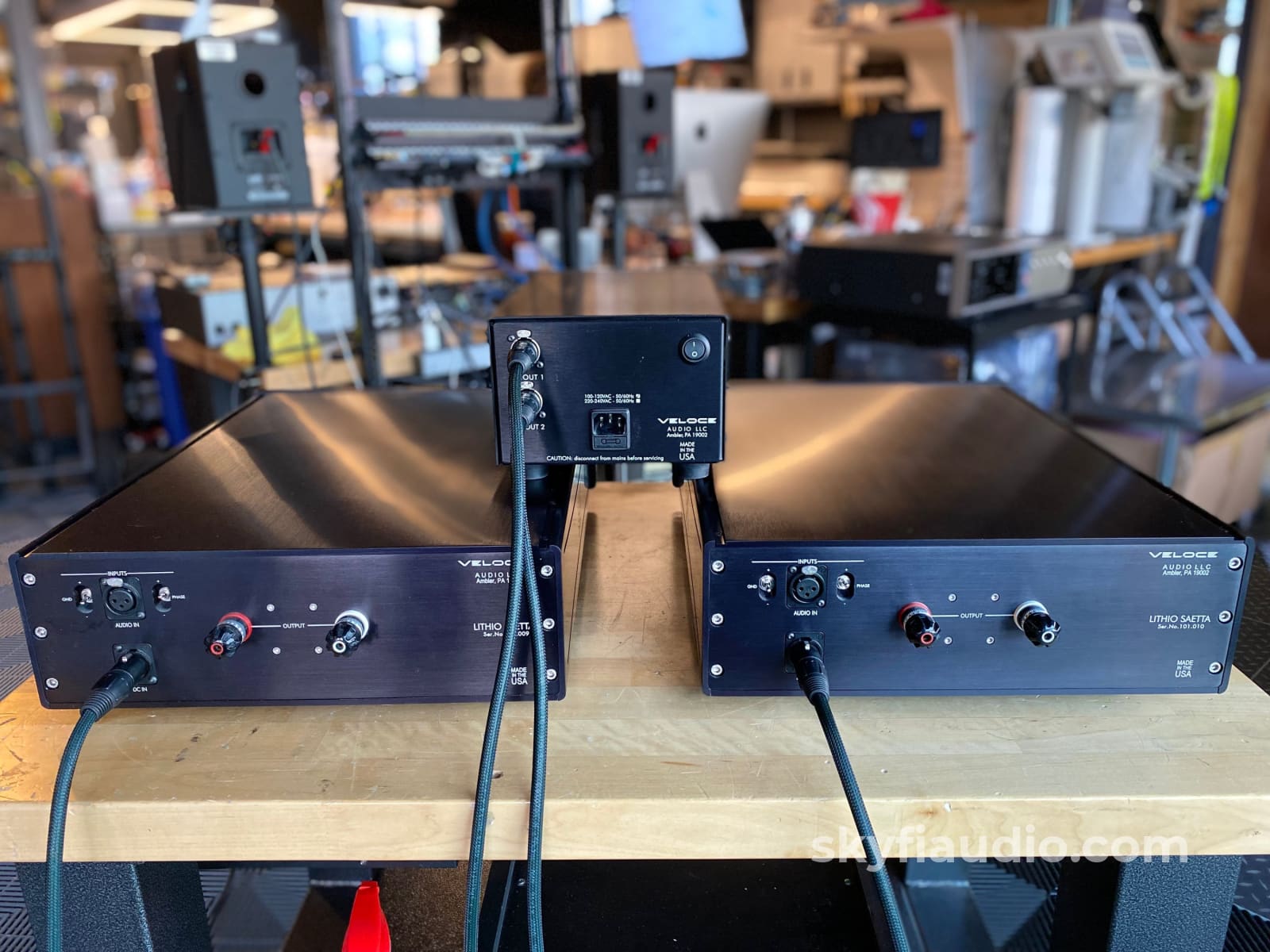
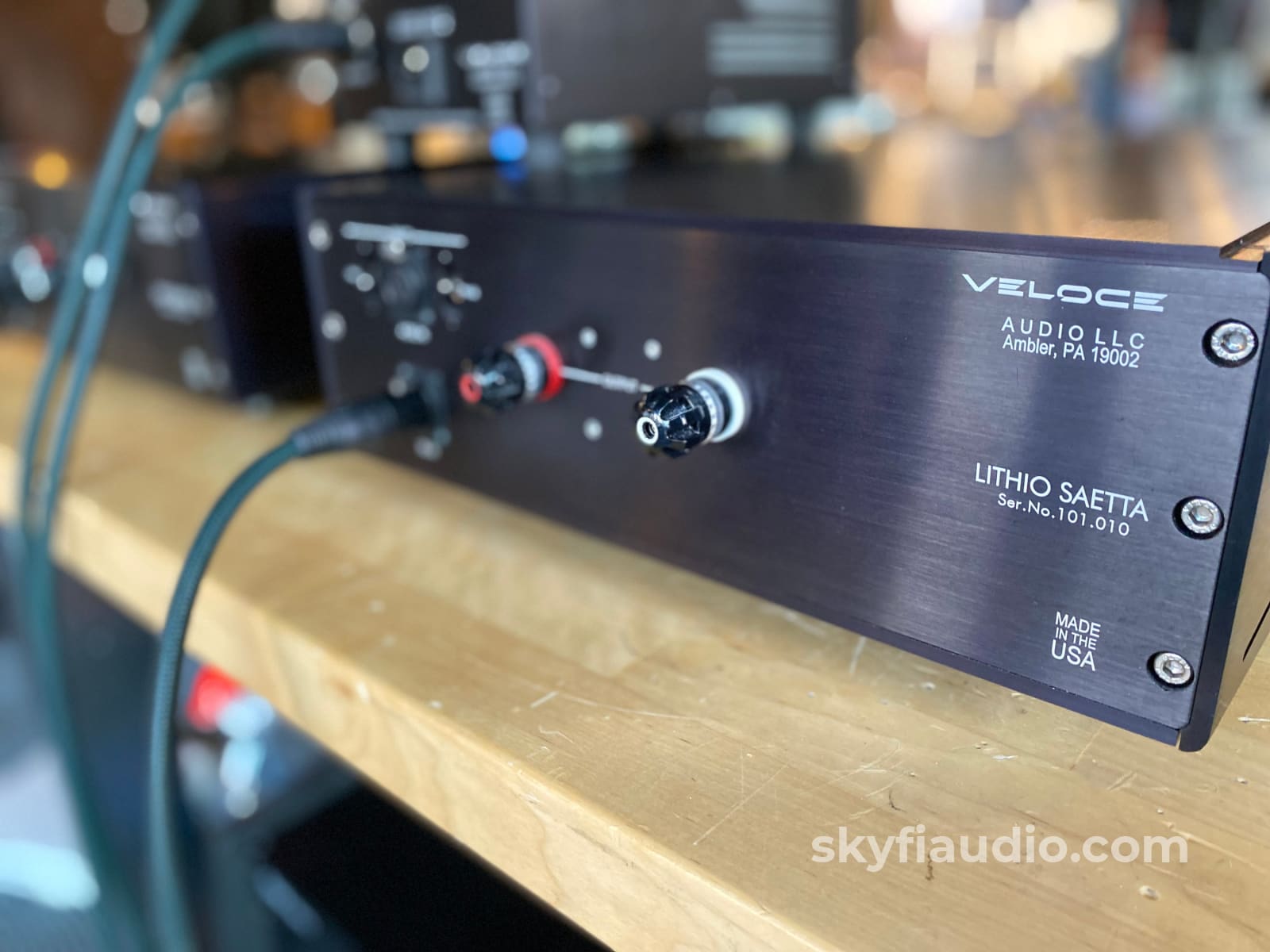
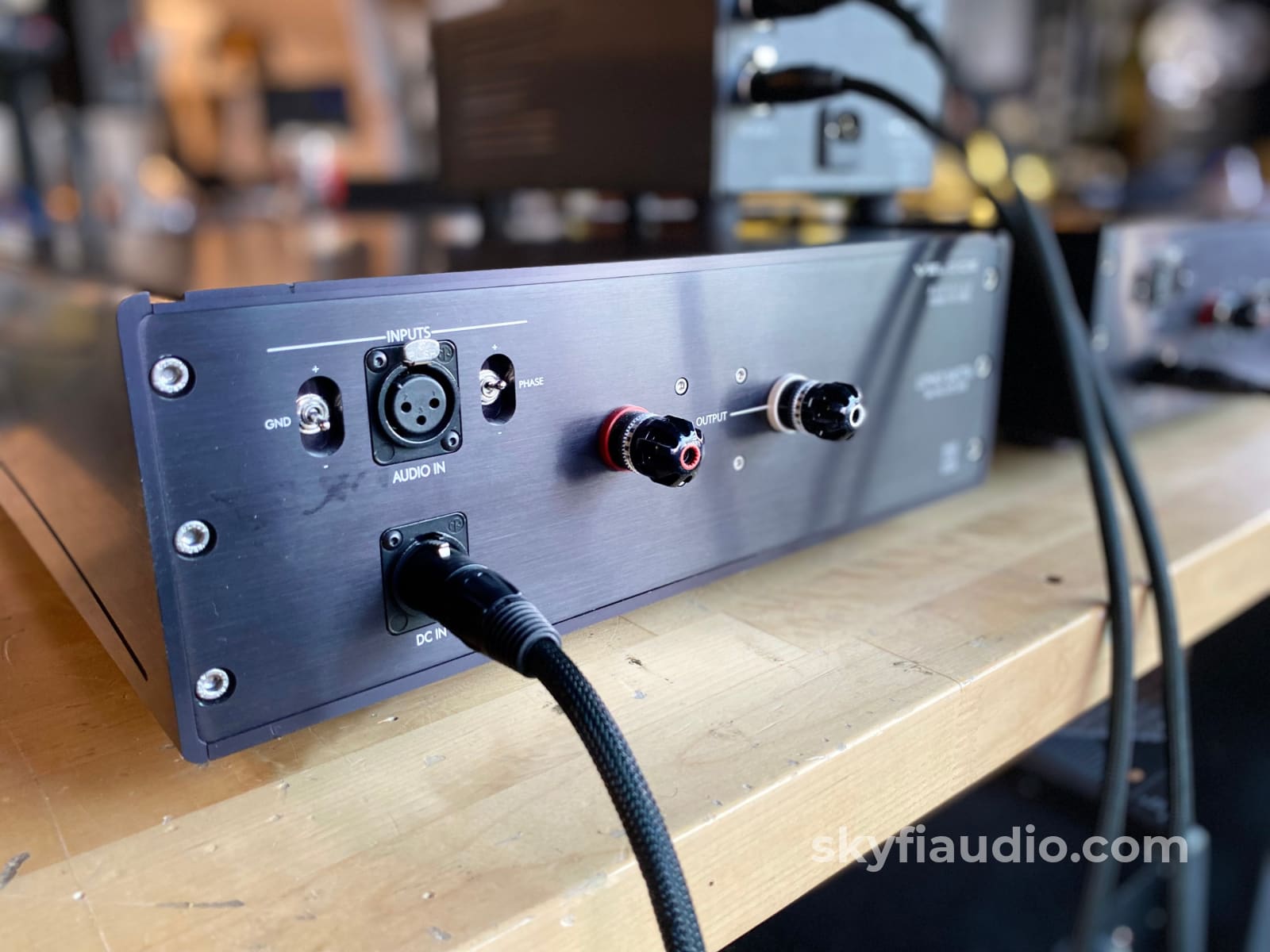
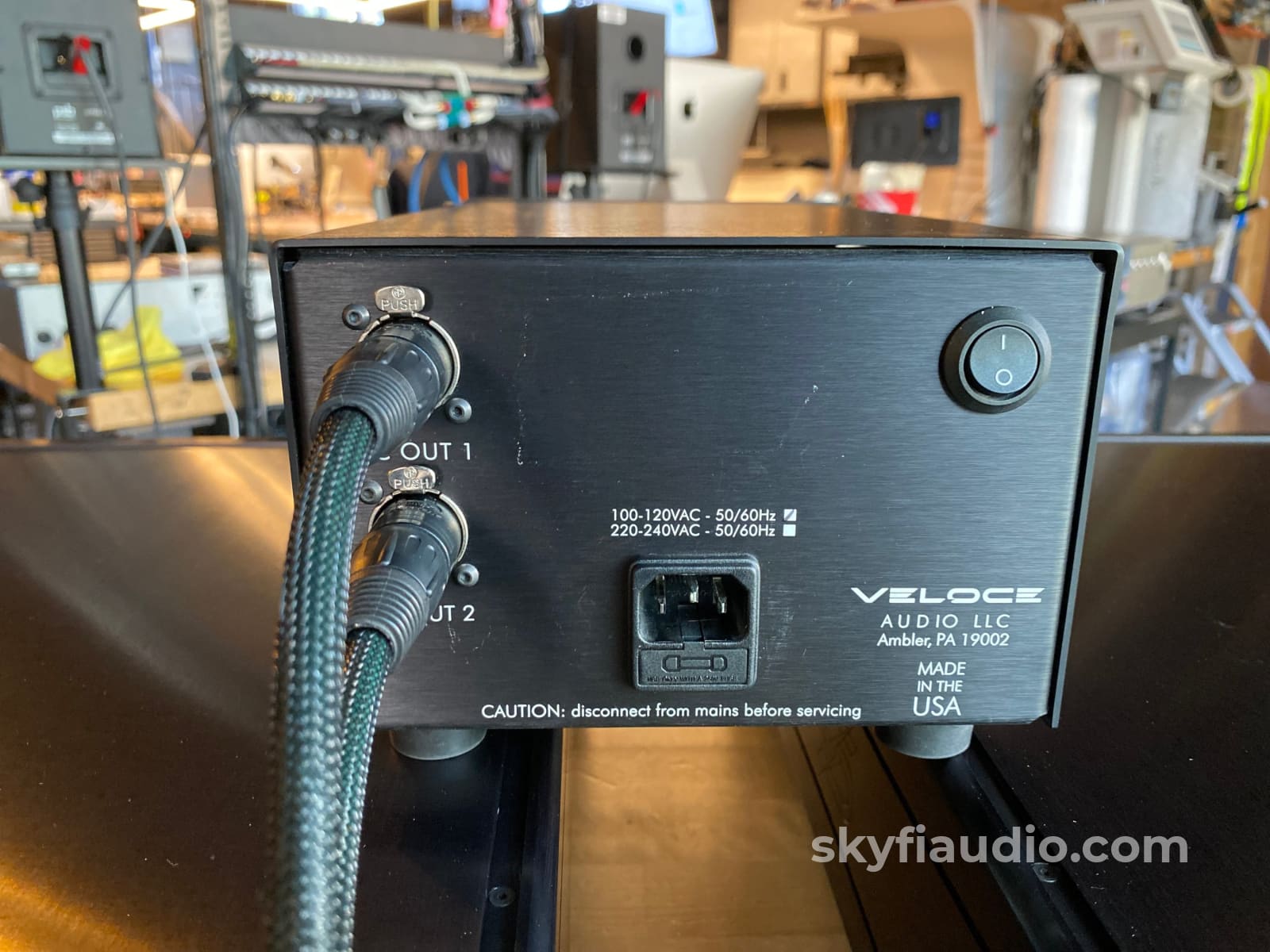
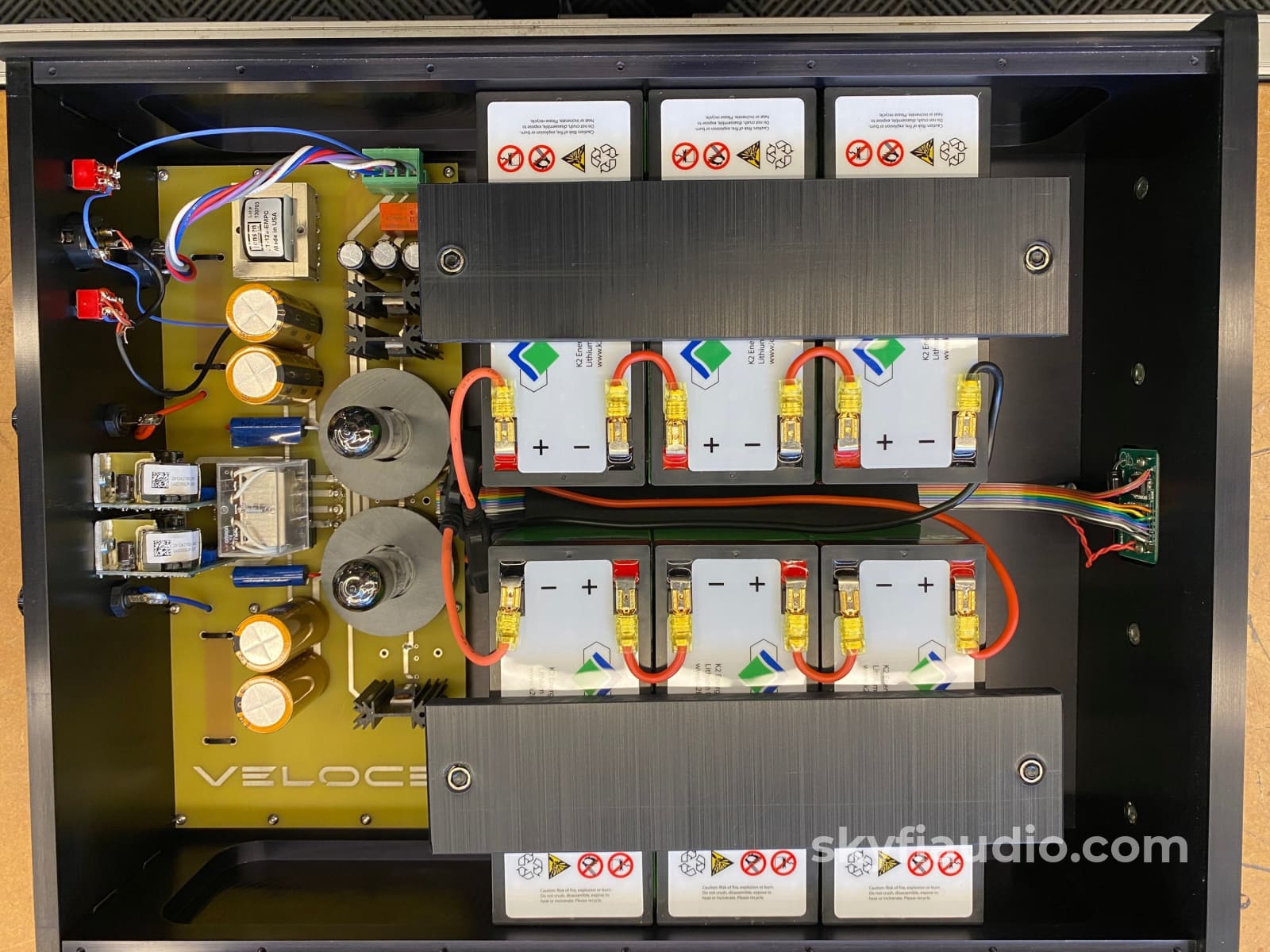

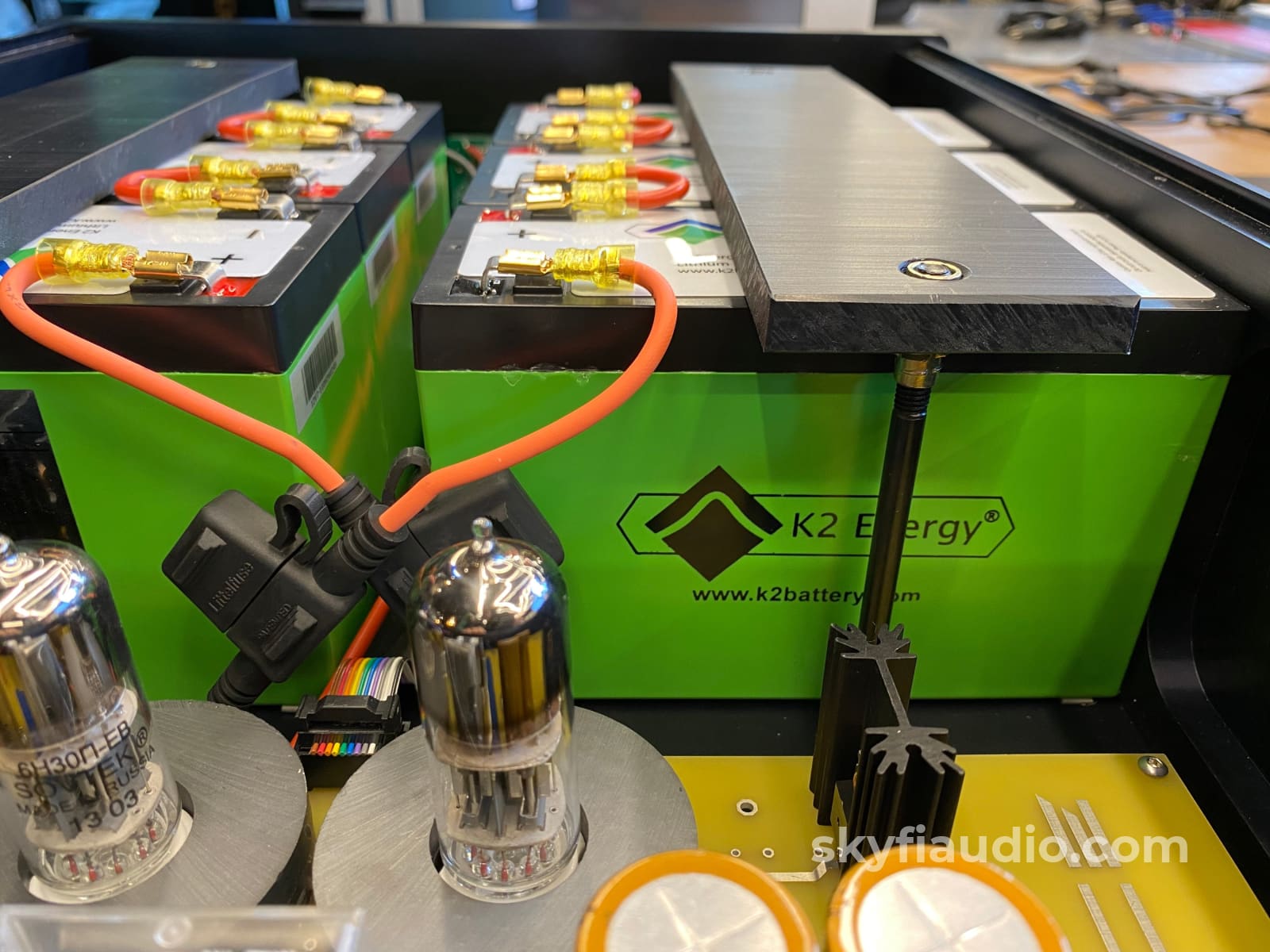
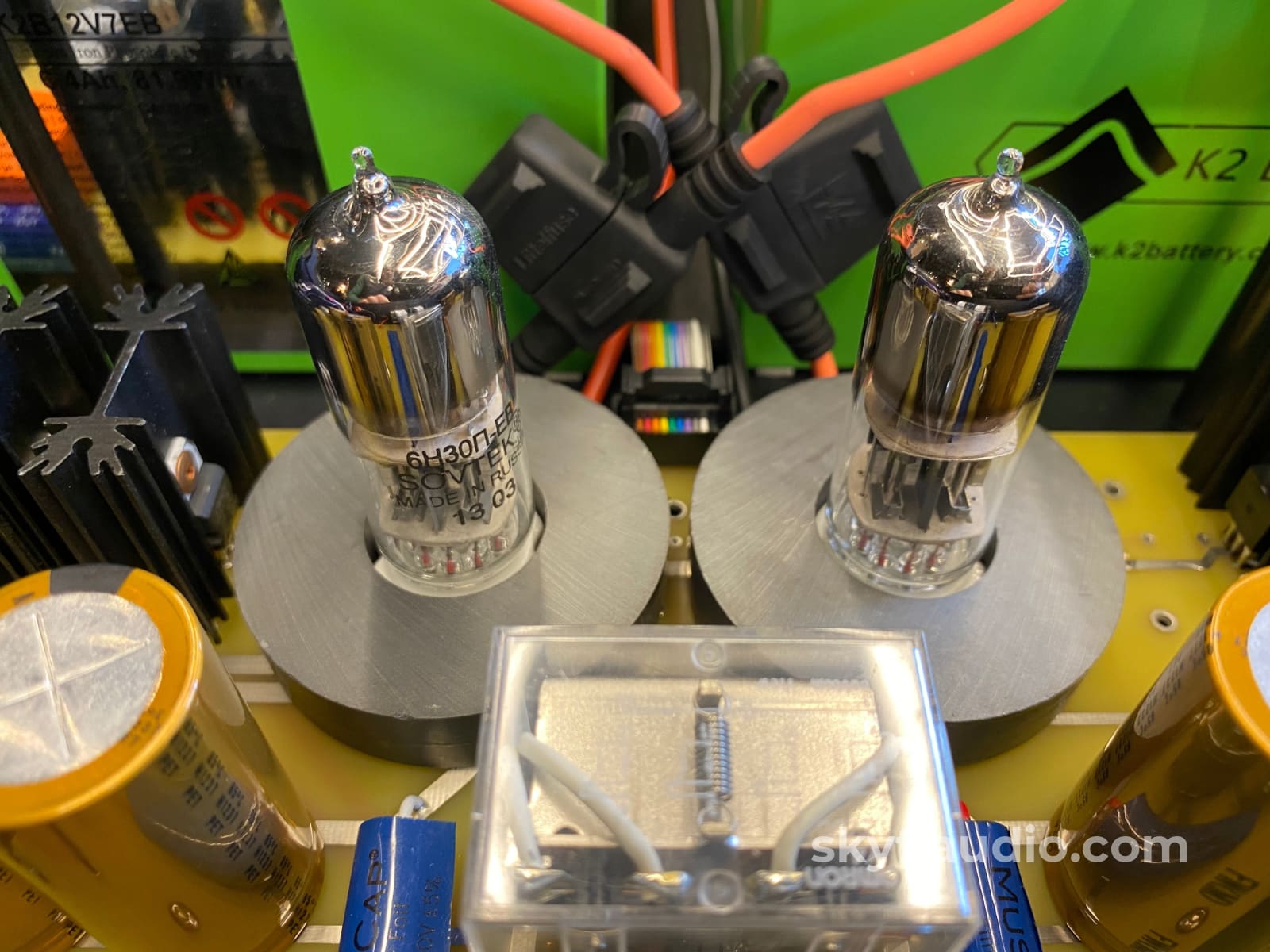

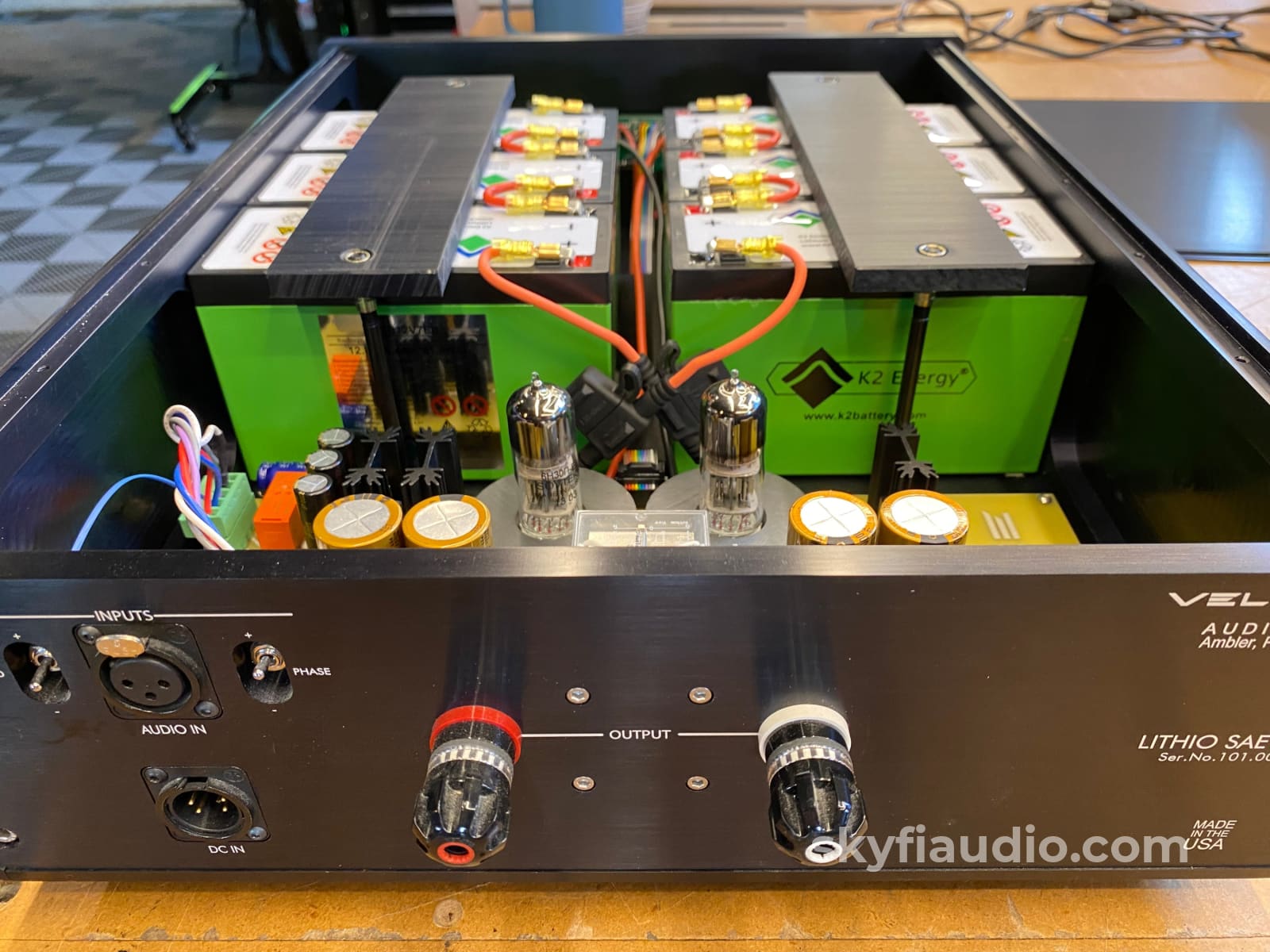
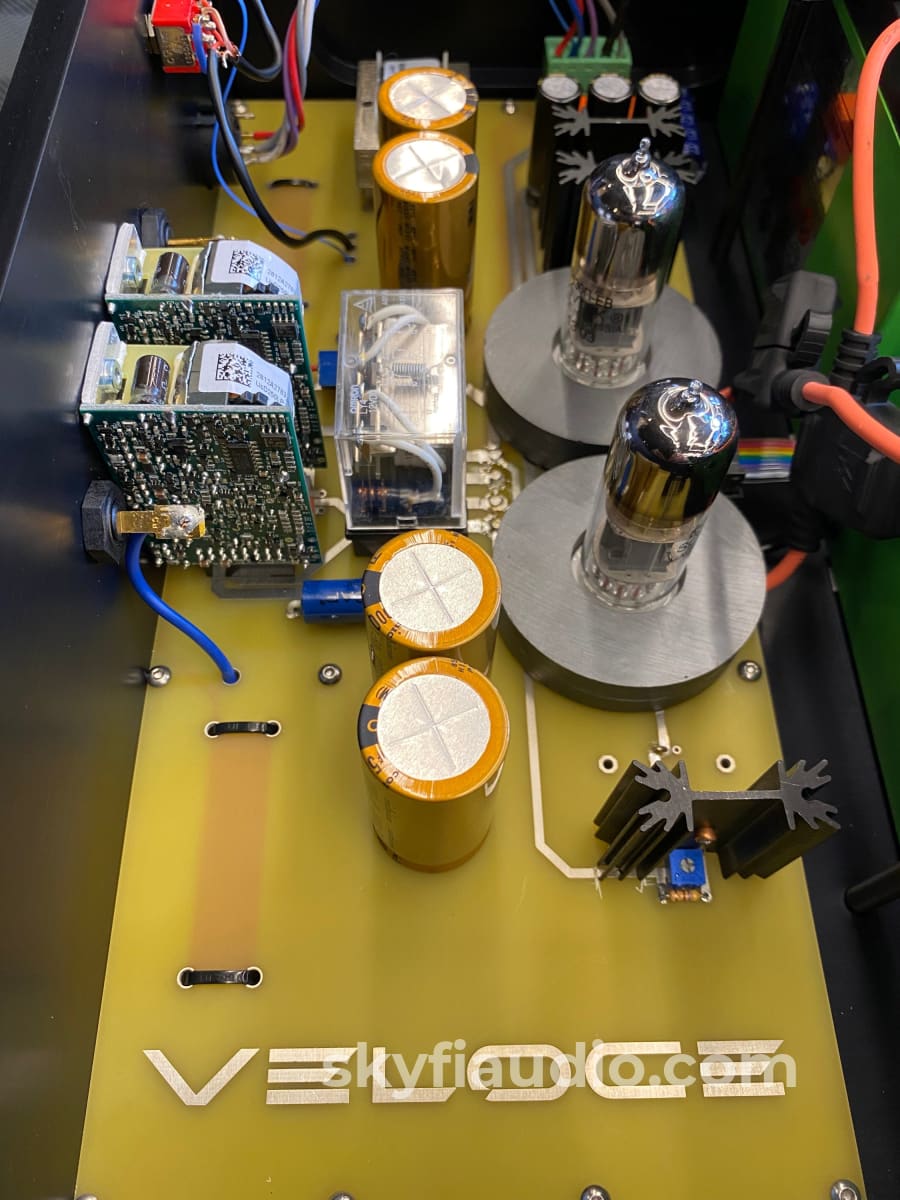
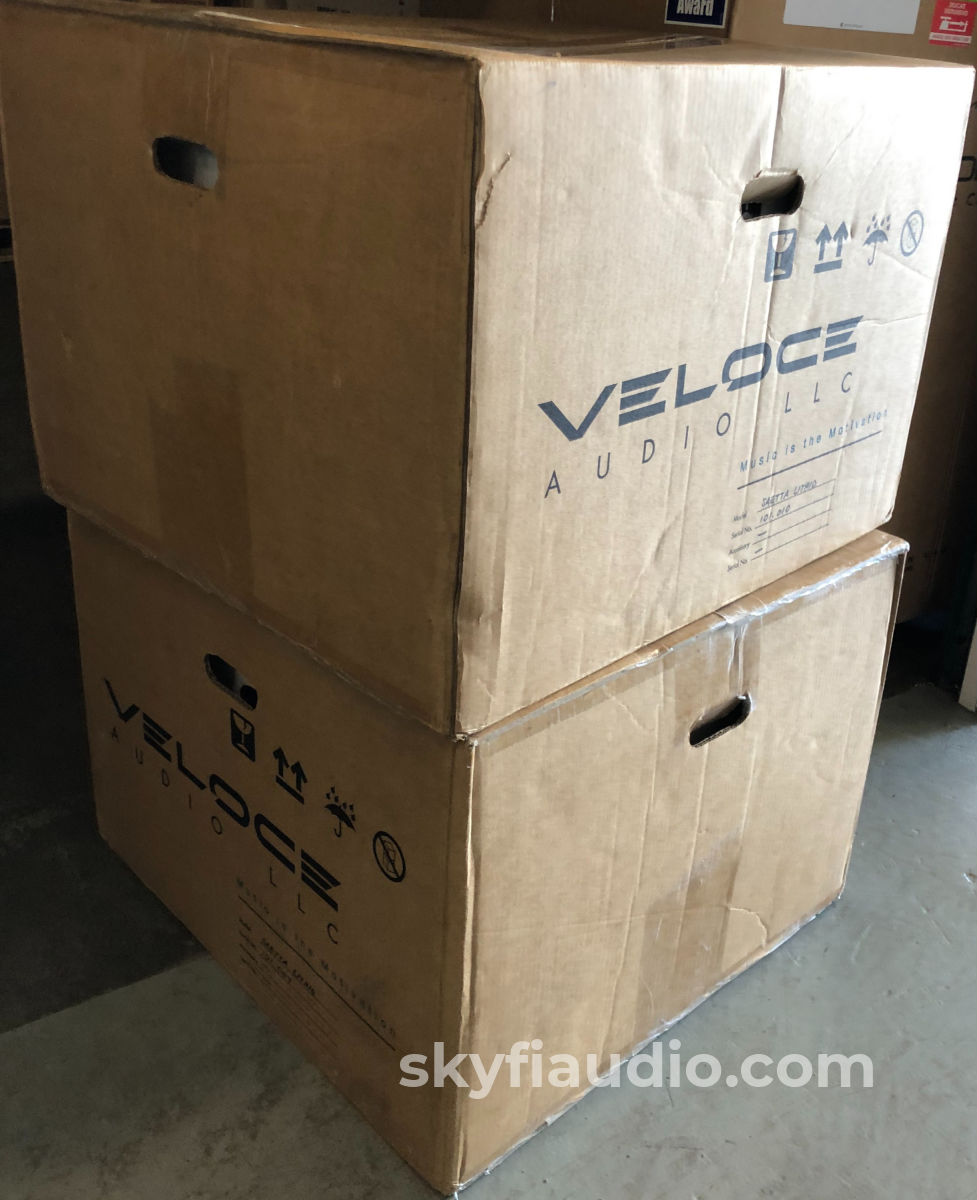
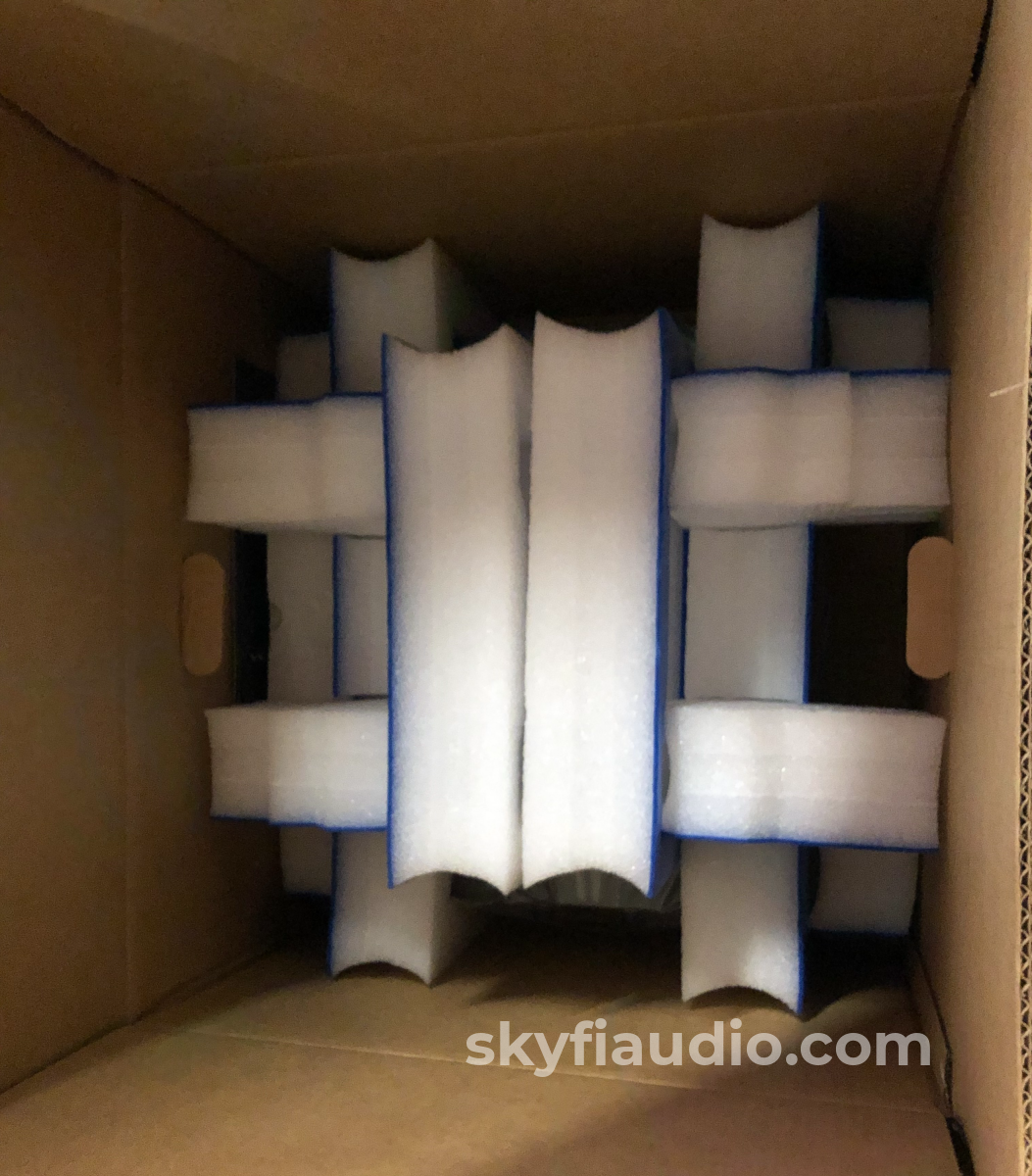
Veloce Audio - Lithio Series Saetta Hybrid Tube Monoblock Amplifiers - Rare
Free Shipping on Most Electronics - Excludes Speakers and Items Requiring Freight - Contiguous U.S. Only
Pickup available at SkyFi 479
Usually ready in 24 hours

Veloce Audio - Lithio Series Saetta Hybrid Tube Monoblock Amplifiers - Rare
SkyFi 479
479 South Broad Street
Glen Rock NJ 07452
United States
Super rare hybrid amplifiers from Veloce Audio, made right here in the USA.
In like new condition, possibly NOS / New Old Stock, as there isn't a single sign of any use.
$19,000 MSRP.
One of the most striking designs we've simply ever seen, utilizing an outboard SmartSupply charging unit along with the highest quality components available.
These are Hybrid mono amps meaning they use Lithio pure DC power supplies inside of each amplifier (see photos). The SmartSupply for charging is included with the amps with its 2 umbilical cords.
These unique amps employ a Class A tube driver stage using (2) 6H30 tubes for perfect transfer of dynamic harmonic information.
This stage is transformer coupled to a bridged solid state output stage for maximum power (400W) and lowest power consumption.
Your purchase includes the original boxes with all original packaging materials, manuals, power cords, and power umbilical connecting cords.
Recommended Cables:
Kimber Kable - BALANCED XLR Connectors - Better
Kimber Kable - BALANCED XLR Connectors - Best
Kimber Kable - Speaker Cables - Better
Kimber Summit Series Monocle XL Speaker Cables (PAIR) - Best
Kimber Summit Series BiFocal XL Bi-Wire Speaker Cables (PAIR) - Best If Applicable
Kimber Kable - Power Cords - Better
Kimber Kable - Power Cords - Best
Specifications:
Amplifier Inputs:
1 Balanced XLR Connection
Loudspeaker Connection:
1 Pair German-Made WBT Binding Posts
(Accepts Spades / Pins / Bare Wire)
Tube Compliment:
2 x 6H30 tubes
Power Rating:
320 Watts / 8 Ohms
400 Watts / 4 Ohms
Gain:
24 dB
Efficiency:
92% at full power
Input Impedance:
100 kohm
THD + N:
<0.03%
Frequency Response:
+0 / -2dB from 5 Hz to 45 kHz
Residual Noise:
< -90 dB
Power Input:
110/117 or 220/234 Volts AC @ 50-60 Hz
Charger Stage Output:
42 Volts/ 4.5 Amps
Lithium Hybrid Clean Power Supply:
+ / - 40 Volts
Finish:
Aluminum - Black Anodized & Chrome
Weight:
32 lbs each / 75 lbs Complete System
Dimensions:
4.5" H x 14" W x 18" D each
The SkyFi Testing Process for Tube Amplifiers:
We start with a visual inspection of all internal components to make sure that there are no signs of heat stress or damage. Capacitors are checked for telltale signs of predictive failure including bulging, shrunken wrappers, or physical leakage. We also inspect resistors and other passive components for signs of overheating. If tube arcing has occurred in the past we can usually spot discoloration on the output tube sockets. On vintage units we often spot check select capacitors for value and ESR.
If the amplifier passes visual inspection, we move on to a full test of all of the tubes. We use an Amplitrex AT-1000 Tube Tester which is capable of testing both emission and Gm with a high degree of accuracy. We document the results of each tube and replace any weak or suspect tubes before proceeding. When we power on tube amplifiers for the first time we usually use a variac and current limited AC supply and slowly raise the voltage up to nominal mains level while monitoring plate, screen, filament, and negative bias supply voltages where applicable. If everything is in order we feed a low level test signal into the amplifier’s input and monitor its output on an oscilloscope across an 8 ohm dummy load. At this point we are just looking to verify basic function and confirm that the output transformers are not damaged. Once we have verified that the amplifier is safe to operate, we connected it to full mains power. For fixed bias amps we set the bias to manufacturer spec. For cathode biased amps we monitor the plate to cathode voltage to determine if the output tubes are operating in a safe range. Once the output section is verified we move onto bench evaluation.
We start by feeding the input of the amplifier with a low level 1KHz test signal, slowly increase its amplitude while monitoring the amplifier’s output on an oscilloscope for signs of noise, clipping, distortion, or improper channel balance. We continue increasing the signal level until the amplifier reaches clipping. At this point we take an output power measurement and compare it to the spec sheet of the amplifier to verify proper performance. We finish off the bench evaluation with a 1KHz square wave check and a 20Hz to 20KHz sine sweep to assess the amplifier’s frequency response characteristics. This battery of tests will usually reveal if the amplifier has any issues that need further attention.
Before the device leaves the bench, we perform a listening test with actual music using a variety of preferred test tracks. Our benches are outfitted with familiar monitor speakers which help us identify inconsistencies that will not always show up on our test gear. The main things that we are listening for are hum or noise with no signal present, proper center image, clicks, pops, or any other obvious undesirable audio characteristics.
If the unit passes all of these tests it is moved to our long term testing rig where we simulate real word operating conditions for 6-8 hours. For tube amps we like to run this test at least twice. This allows us to monitor the unit for signs of thermal runaway or intermittent issues that only crop up when it has fully come up to temperature. We find this step to be essential, especially for vintage units.
|
Item |
Included |
|
Original Boxes |
Yes Included |
|
Manual |
Yes Included |
|
Remote |
Not Applicable |
|
Cables |
Yes Power & Umbilicals |
|
Physical Condition (Info Here) |
9 / 10 |
|
Working Condition |
10 / 10 |
Choose options




















